Harriet Tubman and Black History Month Polly Carter Reading Level
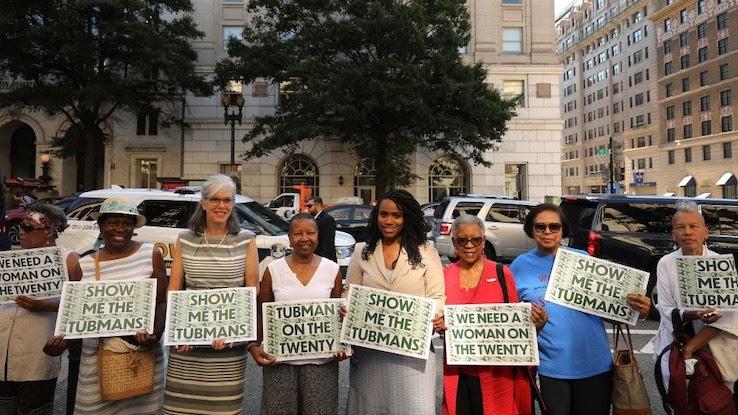
On January 25, 2021, only five days into the Biden-Harris assistants, White House Press Secretary Jen Psaki appear that "The Treasury Department is taking steps to resume efforts to put Harriet Tubman on the front of the new $20 notes." This comes subsequently the Obama-era initiative to replace Andrew Jackson with Harriet Tubman on the $20 note, originally scheduled to exist completed in 2020, had been delayed by the Trump assistants.
The Biden-Harris administration's push to get the currency redesign back on track, along with President Biden's day-1 executive order aimed at promoting racial equity, is an accurate reflection of the distinct ideological divide between the two administrations. In 2019, so-Secretarial assistant of the Treasury Steven Mnuchin declined to motion the projection forrad, challenge that "counterfeit problems" were to blame for the delay. Trump himself chimed in to downplay the redesign endeavor equally "pure political definiteness."
Directly countering the old administration's obstructionist dismissals of the project, Press Secretary Psaki stressed in her January 25 statement, "Information technology'due south important that our…money reflects the history and diverseness of our country, and Harriet Tubman's image gracing the new $20 note would certainly reverberate that."
Despite the securely divided, partisan and turbulent nature of U.Southward. politics and lodge today, Americans largely seem to hold that working against racism of all types is i of the land'due south most important challenges. According to a Monmouth Academy Poll released in June 2020, 76% of Americans polled agreed with the statement that racism and bigotry are a "large problem" in the U.Southward. Then while representation of Blackness Americans, like Harriet Tubman, on our currency feels in some ways like the absolute least we tin do to gainsay racism, it is a valuable, and necessary, step in the right direction.
Who Was Harriet Tubman?
Built-in into slavery in Maryland in the early 1820s, Tubman was an abolitionist, women's rights activist and Hush-hush Railroad "conductor" who provided safe passage to dozens of enslaved people later on escaping from slavery herself at age 27.
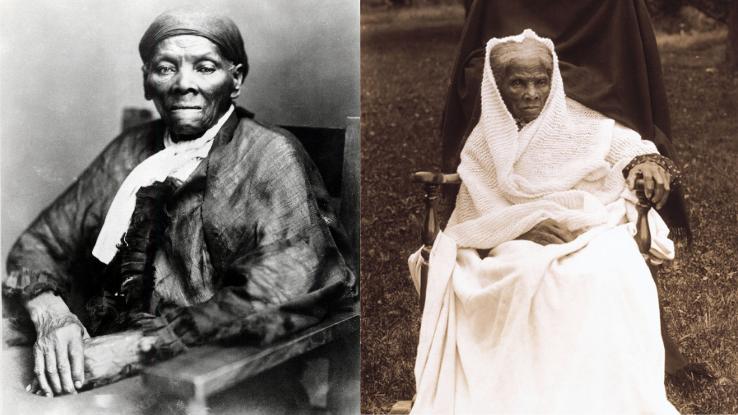
After escaping to Philadelphia in 1849, Tubman, who described slavery equally "the next thing to hell," returned to Maryland 13 times between 1850 and 1860 to help rescue enslaved people, including Tubman's siblings and relatives. Said Tubman, "I was the conductor of the Underground Railroad for 8 years, and I can say what most conductors can't say — I never ran my train off the track and I never lost a passenger." Her tireless work rescuing enslaved people earned Tubman the nickname "Moses."
During the U.S. Civil War, Tubman worked as a spy, scout, nurse and guerilla soldier for the Matrimony military. Disguising herself every bit an elderly woman, Tubman entered Confederate-occupied towns and communicated with enslaved people to gather cognition of Confederate troop movements and supply lines, relaying the intel back to Union generals. The Union military also benefited from Tubman'south deep noesis of tunnels and routes used by the Hush-hush Railroad.
In the years following the Civil War, Tubman met suffragists Elizabeth Cady Stanton and Susan B. Anthony, began attention women's suffrage meetings in Geneva, NY, and went on speaking tours to New York, Boston and Washington, D.C., in support of women's voting rights. Despite never learning to read or write, Tubman earned a reputation as an eloquent and exemplary orator, speaking about her experiences escaping from slavery and rescuing others on the Hole-and-corner Railroad, to fence in support of respect and equal rights for Black and white women alike.
Tardily in her life, Tubman settled in Auburn, NY, where she opened a remainder home for elderly Blackness citizens and worked with local writer Sarah Bradford to write her biography, Harriet Tubman: The Moses of Her People.
The idea to feature Tubman on the $xx bill got its beginning in 2014, when then-President Barack Obama received a letter from a girl in Massachusetts proposing that U.S. bills feature women from U.S. history. While notable women such as Susan B. Anthony, Hellen Keller and Sacagawea have fabricated appearances on U.South. coins, paper bills currently in apportionment but feature men, the letter's writer pointed out.

In 2015, the U.S. Treasury Department began soliciting ideas from the public to make up one's mind who should appear on the currency, and the plan to include Tubman on the $20 annotation was officially announced in April 2016. The new bills were meant to debut in 2022 to commemorate the centennial of the adoption of the 19th amendment, which gave (more often than not white) women the right to vote, and the bills were expected to exist widely available to the public by 2026.
How Often Do Currency Portraits Alter?
Portrait changes on U.S. bills are relatively rare — the last update occurred in 1929, when Alexander Hamilton was placed on the front end of the $ten beak. The release of $twenty bills featuring Tubman will mark the first-e'er appearance of a Black woman on U.S. currency.
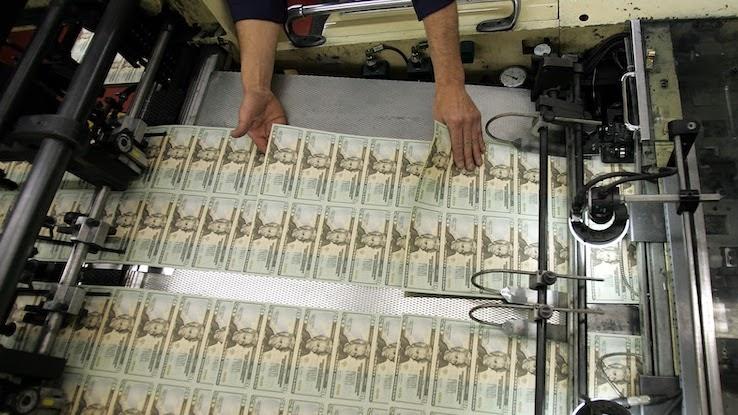
At that place are several laws and regulations that govern who can appear on U.S. currency. No living person is allowed to be featured on U.Due south. currency. There is only one rule that stipulates a specific portrait: $1 bills are legally required to characteristic George Washington. Currency law gives the Secretary of the Treasury full dominance over currency redesigns and updates — giving the department concluding approval rights over any proposed portrait changes.
Currently, the following portraits appear on U.Southward bills:
- $1 — George Washington
- $2 — Thomas Jefferson
- $v — Abraham Lincoln
- $10 — Alexander Hamilton
- $xx — Andrew Jackson
- $50 — Ulysses S. Grant
- $100 — Benjamin Franklin
Why Replace Andrew Jackson?
Jackson'south portrait on the $twenty annotation has been the subject field of sharp criticism from historians and the public akin due to his condition as a slave possessor and his leading function in the Trail of Tears. Jackson (forth with Thomas Jefferson and George Washington, who also appear on U.S. bills) was a slave possessor, and brought enslaved people to the White Firm from his family's plantation, The Hermitage, when he became president in 1829. Historians believe that the renovations and improvements Jackson fabricated to the White House during his tenure as president were completed using slave labor.
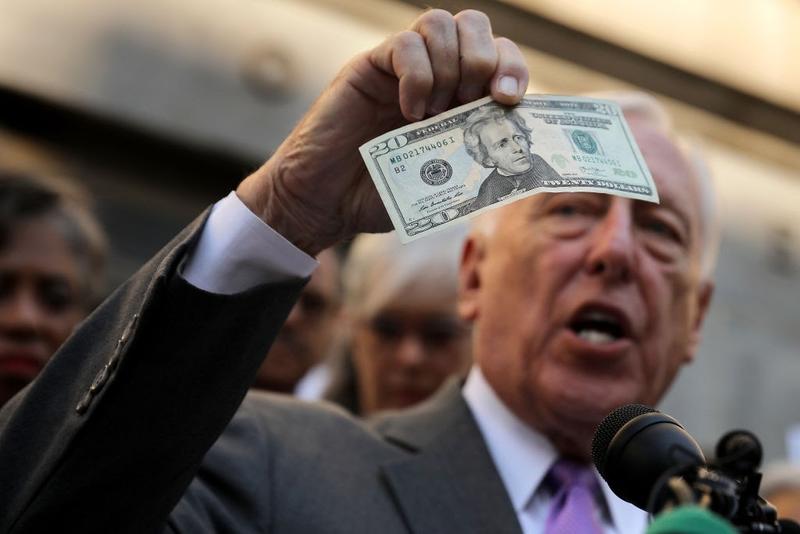
In 1930, Jackson signed into law the Indian Removal Human activity, which gave his administration the legal right to relocate Native American tribes living due east of the Mississippi River to country obtained during the Louisiana Buy. In the winter of 1831, the U.S. Army invaded the Choctaw Nation's land, forcing them to leave the region where their families had resided for generations, and walk, on foot, with no food, supplies or water, to present-day Oklahoma. Over the adjacent decade, the federal government forced tens of thousands of Native Americans to relocate west of the Mississippi — almost oftentimes using deadly, forced marches following a route that has come to exist known as the "Trail of Tears." These marches, which spanned over 1,000 miles and caused the deaths of thousands of Native people, are today widely regarded as genocide.
How Soon Will the New Notes Be in Apportionment?
While Press Secretarial assistant Psaki wasn't able to provide a timeline for the bill'due south redesign, she reassured the press that the White House is "exploring means to speed upwardly" the project. Janet Yellen, President Biden's pick to head the Treasury Department, every bit well as the start woman to hold the post of Secretary of the Treasury in the department'southward history, volition oversee the projection.
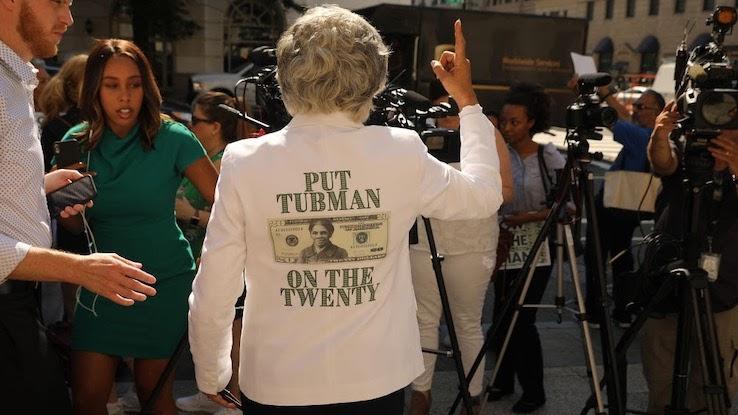
Source: https://www.reference.com/history/harriet-tubman-20-history?utm_content=params%3Ao%3D740005%26ad%3DdirN%26qo%3DserpIndex
0 Response to "Harriet Tubman and Black History Month Polly Carter Reading Level"
Publicar un comentario